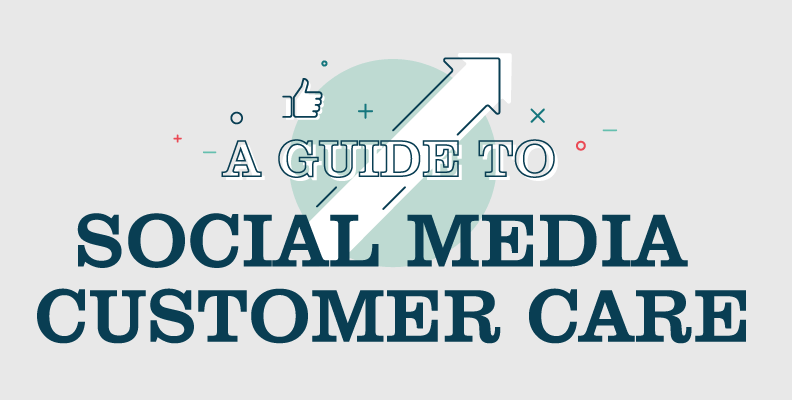7 Things to Do in Your First Year of Business
Most small business owners work 50 – 60 hours a week, especially during the first year of operation.1 You’ll be busy tackling the basics — creating a business plan, managing the business’s finances, developing a marketing strategy, etc. — and working to fit in all the extras— reaching out to other small business owners, accruing customer feedback and lots more!
It’s a daunting amount of work for anyone, but you can make sure you’re checking all the boxes with our first-year business musts. We’ve narrowed down the long list to a number of essential financial and marketing tasks that can help propel your business to a successful first year.
Financial Should Do’s
1. Create a business plan.
Having a business plan in place is crucial to your business’s success. You may even already have one if you reached out to potential investors and lenders for capital to open your business in the first place.
Now is the time to sit down and write one if you haven’t done so already. Quick tip: It doesn’t need to be super lengthy. You’ll want to get the basics down, like a short description of your company, products, target market and sales goals. Having this information handy will help you make informed decisions when facing questions like adding new products or hiring extra personnel.
You can use any of these handy business plan templates to get started.
2. Save for unexpected expenses and taxes.
First-year finances will have a tight margin. You’ll be in the process of figuring out the best product and/or service pricing, navigating monthly sales fluctuations and more. As tight as those margins will be, make it a habit to put aside a small portion of profit for unexpected expenses and, most importantly, taxes.
Surprise expenses are a given, and if you’re not prepared, it could be a huge hit to your budget. Taxes are another big expense that absolutely require saving ahead of time. How much you owe will partly depend on the state you’re in, whether your business is you and your laptop or a brick and mortar storefront, and how much income you bring in during your first year.
3. Create separate financial accounts for you and your business.
There’s a possibility that you don’t have separate accounts for your personal finances and your business’s finances. Many small business owners fund their businesses directly out of their personal funds at the start since it’s easier to have everything in one account.
Once your business is up and running though, it’s time to separate finances. This includes separate bank accounts and business credit cards. Having dedicated financials not only makes tallying your business’s monthly profits and expenditures easier, it also helps you to build your business’s credit history. This can be a boon further down the line should you need to apply with a lender for additional working capital. If you need help managing your new business accounts, there are small business accounting tools available to provide some support as you learn and help keep you organized.
4. Hold off on a full salary for yourself.
Keeping to your budget and staying in the black can be a challenge during your first year. But one sure-fire way to ensure you’re keeping costs to a minimum is taking little to no salary for those initial 12 months. You shouldn’t be paying yourself an exorbitant amount until your profit intake is at a comfortable level — where that level is will vary depending on your budget and business plan, but it should be somewhere that is steadily in the black.
Marketing Should Do’s
1. Build Your Business’s Website.
No matter the industry you’re in, a polished website is an absolute must-have for your business. When most people need a service or are looking to purchase goods, the first place they search is the internet. Without a website, how will potential customers find your business?
Plus, you need a website to help with all the marketing you’re going to be doing. Whether it’s social media or email campaigns, you’ll want to drive those existing (and potential) customers to your homepage. You can design a great looking site for little cost with sites like Squarespace, Wix and WordPress.
2. Establish Your Social Media Presence
Social media is a given for almost all companies. But you shouldn’t feel pressured to have an account on every single platform — that’s a lot of time and effort that might not necessarily pay off.
Instead, pick a couple of platforms that best align with your business and the industry you’re in. Most small businesses would be wise to have a Facebook page — it’s a fairly easy way for customers to find your business and ask questions. Plus, you can take advantage of a marketing opportunity with Facebook Ads. Twitter is another ideal social platform for keeping in touch with your customer base. It’s a good medium for sending out short details like business announcements and fielding customer questions. Like Facebook, you can also look into advertising on Twitter.
Beyond those two platforms, it’s a toss-up as to whether or not you want to be on more platforms. LinkedIn could be a good option for professional services like accounting or insurance, and Instagram could offer good advertising potential for retail services. So consider your industry and the time you want to dedicate to managing social media to help you decide which, if any, additional social media platforms to take on.
3. Try Multiple Marketing Methods
We’ve already talked about how you can advertise on social media with Facebook and Twitter, but there are many other marketing opportunities to try. That’s the main focus here: trying out different options. You don’t want to rely solely on one marketing method in the beginning, since that option may not work out in the end. Try a couple of the following options on a low budget to start gauging which methods benefit your business the most.
- Provide free service/products to local events — Connect your business to the community by participating in local charity events. They can bolster your business’s presence and help with word-of-mouth recommendations.
- Post positive customer reviews on your website — Reach out to customers who had a good experience and ask for a recommendation — people often choose businesses based on reviews.
- List your company on Google Maps — It’s a fast and free way to make sure your business pops up in local search results.
- PPC (Pay-Per-Click) — Also known as paid search and search engine marketing, your ads will appear to certain users depending on the words they’re searching for.
- Remarketing — This marketing targets customers who visited your website but left without purchasing anything. They’ll see banner ads for your company while they’re perusing other internet pages.
- Email marketing — Sending out emails to existing and potential customers is easier than ever with marketing email sites like MailChimp.
- And many more!
You have plenty to handle during your first year of business, but these financial and marketing should do’s can help keep your business on track for success. Take the time to implement one (or a few) of these strategies today.
References:
1Aklap, N. (May 11, 2015). Surviving your first year as a small business owner. Retrieved September 25, 2017 from https://www.forbes.com/sites/allbusiness/2015/05/11/surviving-first-year-as-small-business-owner/#192f18b78e55
Baker, P. (May 20, 2013). 10 Affordable Small Business Marketing Strategies. Retrieved September 25, 2017 from http://www.smallbusinesscomputing.com/News/Marketing/10-affordable-small-business-marketing-strategies.html
Mama’s in Business. (n.d.). 8 important things to do in your first year of business. Retrieved September 25, 2017 from http://www.mamasinbusiness.com/8-important-things-to-do-in-your-first-year-of-business/
Merriel, G. (November 4, 2016). The average work week: how many hours do business owners work? Retrieved September 25, 2017 from https://www.moretimemoreprofit.com/how-many-hours-do-business-owners-work/
Zwahlen, C. (n.d.). A small business owner’s first year in business: financial check-in. Retrieved September 25, 2017 from https://captain401.com/blog/small-business-owners-first-year-in-business-financial-check-in/






